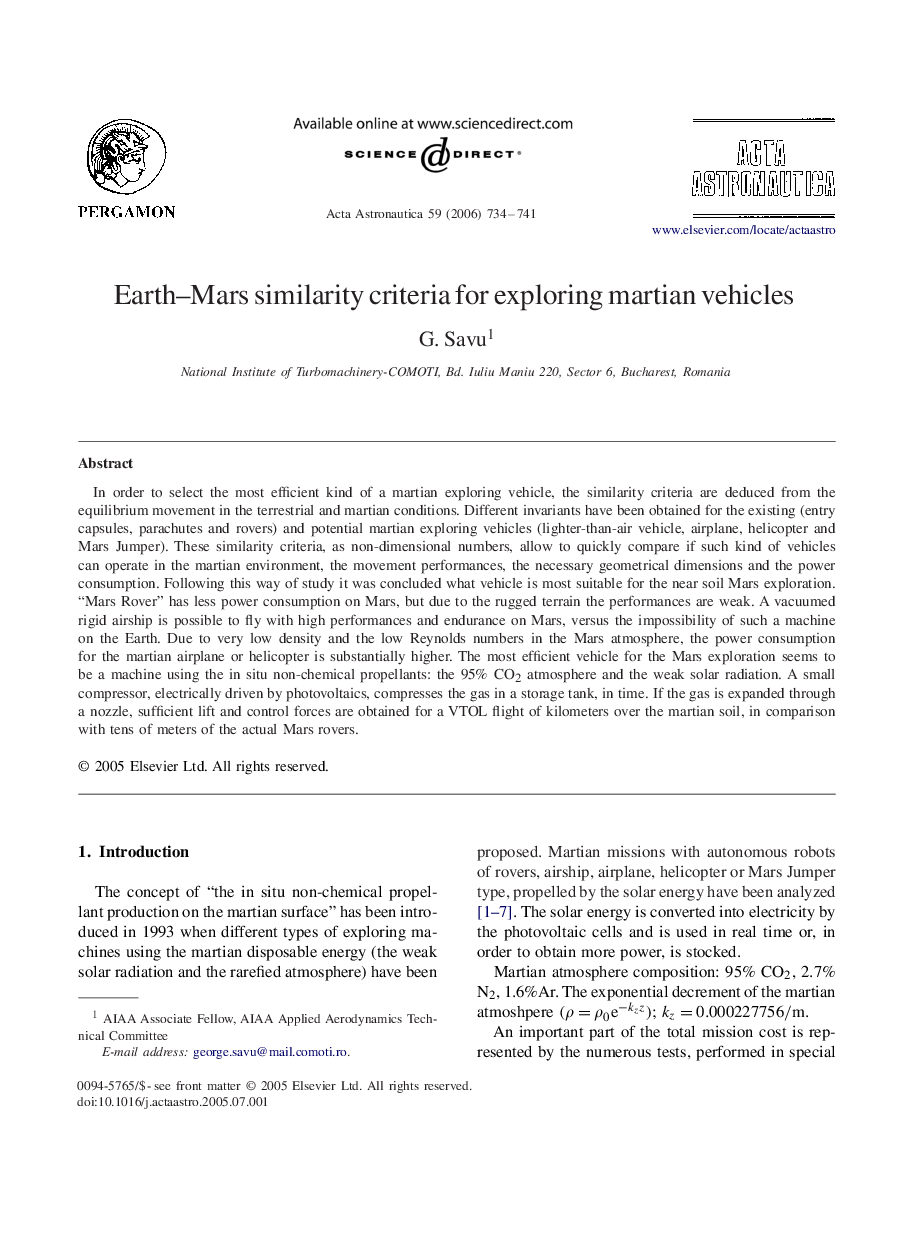| Article ID | Journal | Published Year | Pages | File Type |
|---|---|---|---|---|
| 1717315 | Acta Astronautica | 2006 | 8 Pages |
In order to select the most efficient kind of a martian exploring vehicle, the similarity criteria are deduced from the equilibrium movement in the terrestrial and martian conditions. Different invariants have been obtained for the existing (entry capsules, parachutes and rovers) and potential martian exploring vehicles (lighter-than-air vehicle, airplane, helicopter and Mars Jumper). These similarity criteria, as non-dimensional numbers, allow to quickly compare if such kind of vehicles can operate in the martian environment, the movement performances, the necessary geometrical dimensions and the power consumption. Following this way of study it was concluded what vehicle is most suitable for the near soil Mars exploration. “Mars Rover” has less power consumption on Mars, but due to the rugged terrain the performances are weak. A vacuumed rigid airship is possible to fly with high performances and endurance on Mars, versus the impossibility of such a machine on the Earth. Due to very low density and the low Reynolds numbers in the Mars atmosphere, the power consumption for the martian airplane or helicopter is substantially higher. The most efficient vehicle for the Mars exploration seems to be a machine using the in situ non-chemical propellants: the 95% CO2CO2 atmosphere and the weak solar radiation. A small compressor, electrically driven by photovoltaics, compresses the gas in a storage tank, in time. If the gas is expanded through a nozzle, sufficient lift and control forces are obtained for a VTOL flight of kilometers over the martian soil, in comparison with tens of meters of the actual Mars rovers.
